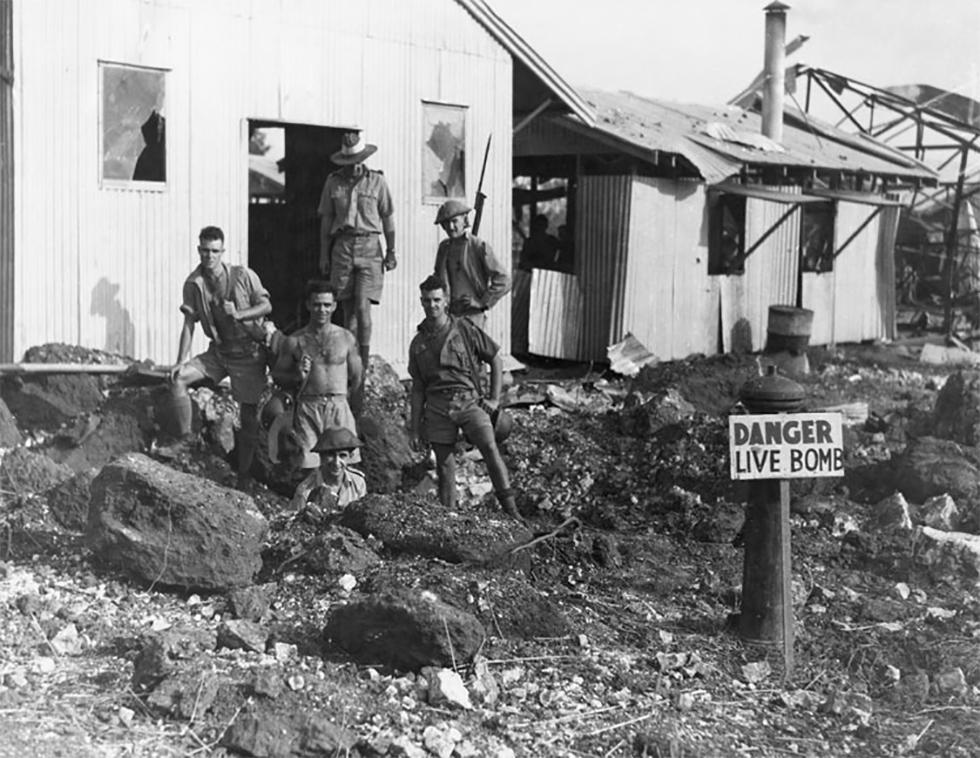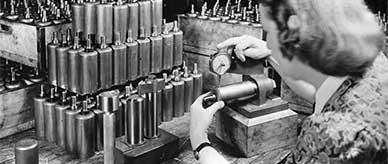


About this record
This is a black-and-white photograph of six Australian soldiers at a bomb site in Darwin, Northern Territory, in 1942. The actual location in Darwin is unidentified. A sign in the foreground says 'DANGER LIVE BOMB', and one of the men is crouching or standing in what could be a bomb crater.
Educational value
- Displays an apparent bomb site in Darwin in 1942, with broken windows and other damage to the buildings behind the soldiers – Darwin was subjected to 64 Japanese air raids in 1942–43, and many unexploded bombs had to be dealt with by special disposal squads.
- Provides examples of Second World War Australian Imperial Force (AIF) uniforms – the men are all wearing standard warm weather working dress of shorts and shirts.
- Shows the use of metal helmets – these would be a normal precaution if air raids were expected, or if there was a possibility of unexploded bombs detonating in the area.
- Gives examples of Second World War AIF weapons – both of the armed men are carrying .303" Short Magazine Lee Enfield rifles, the standard infantry weapon for Australian soldiers from 1914 to the mid-1950s.
- Illustrates an Australian soldier using a fixed bayonet on his rifle – this soldier is likely to have been on guard duty, or possibly keeping curious members of the public away from a potentially hazardous live bomb.
- Could be an example of a posed photograph – although the sign says 'DANGER LIVE BOMB' and five of the soldiers are either wearing or carrying steel helmets, there is no evidence of them performing any bomb disposal work and, if it is a crater from a bomb explosion where the soldiers are standing, it is extremely unlikely that a second unexploded bomb would have fallen in exactly the same place.
Acknowledgments
Learning resource text © Education Services Australia Limited and the National Archives of Australia 2010.
Related themes
Need help with your research?
Learn how to interpret primary sources, use our collection and more.


